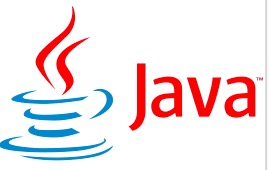八种基本数据类型以及包装类
1. 基本数据类型
byte
占用1个字节(8位),范围:-2^7~2^7-1
short
占用2个字节(16位),范围:-2^15~2^15-1
int
占用4个字节(32位),范围:-2^31~2^31-1
long
占用8个字节(64位),范围:-2^63~2^63-1
float
占用4个字节(32位,1位符号位,8位指数位),范围:2^-149~2^128-1
double
占用8个字节(64位,1位符号位,11位指数位),范围2^-1074~2^1024-1
表格表示:
基本类型字节数位数最大值最小值
byte1byte8bit2^7 - 1-2^7
short2byte16bit2^15 - 1-2^15
int4byte32bit2^31 - 1-2^31
long8byte64bit2^63 - 1-2^63
float4byte32bit3.4028235E381.4E - 45
double8byte64bit1.7976931348623157E3084.9E - 324
char2byte16bit2^16 - 10
2. 包装类:
short → Short
int → Integer
long → Long
char → Character
byte → Byte
float → Float
boolean → Boolean
double → Double
包装类中提供了更多的方法来对数据进行操作。
基本数据的值存放在栈栈中,包装类是在堆中分配空间给对象,栈中存放的是对对象的引用的地址。因此,包装类的效率会比基本数据类型的效率要低。
3. 包装类的装箱与拆箱
- 装箱
以Integer为例。
将基本数据类型变为包装类,例如
Integer i = 2;
这里自从jdk15后可以这样写,jdk15之前必须显示的new Integer(2),这里实际上是自动调用了Integer.valueOf(int i)方法,Integer.valueOf(int i)源码如下
public static Integer valueOf(int i) {
if (i >= IntegerCache.low && i <= IntegerCache.high)
return IntegerCache.cache[i + (-IntegerCache.low)];
return new Integer(i);
}
1
2
3
4
5
发现里边有个IntegerCache,是什么东西呢。再看源码
private static class IntegerCache {
static final int low = -128;
static final int high;
static final Integer cache[];
static {
// high value may be configured by property
int h = 127;
String integerCacheHighPropValue =
sun.misc.VM.getSavedProperty("java.lang.Integer.IntegerCache.high");
if (integerCacheHighPropValue != null) {
try {
int i = parseInt(integerCacheHighPropValue);
i = Math.max(i, 127);
// Maximum array size is Integer.MAX_VALUE
h = Math.min(i, Integer.MAX_VALUE - (-low) -1);
} catch( NumberFormatException nfe) {
// If the property cannot be parsed into an int, ignore it.
}
}
high = h;
cache = new Integer[(high - low) + 1];
int j = low;
for(int k = 0; k < cache.length; k++)
cache[k] = new Integer(j++);
// range [-128, 127] must be interned (JLS7 5.1.7)
assert IntegerCache.high >= 127;
}
private IntegerCache() {}
}
1
2
3
4
5
6
7
8
9
10
11
12
13
14
15
16
17
18
19
20
21
22
23
24
25
26
27
28
29
30
31
32
33
可以看出这个类中已经默认创建了值为-128~127的Integer对象,所以当我们赋值的时候如果变量值在这个范围内,则会直接引用这个存在的对象,不必再new新对象,这种缓存机制,可以减少大量的new对象,提高效率,并且其中的high值是可以配置的。配置方法
-XX:AutoBoxCacheMax=< size >
float、double类似。
在idea中可以这添加启动参数来配置:
对此,有以下代码:
public static void main(String[] args) {
Integer a = 1;
Integer b = 1;
System.out.println(a==b);
Integer c = 200;
Integer d = 200;
System.out.println(c==d);
}
1
2
3
4
5
6
7
8
9
输出为:
true
false
1
2
3
在配置了high的值(例如1000)后输出都为true.
因为a和b在[-128,127]之间,引用的是同一个对象,所以相等。
而c和d虽然值都为200,但是不在[-128~127]之间,是两个完全不同的对象,所以不相等。
所以,判断两个Integer的值是否相等,应该用equlas方法。
- 拆箱
将包装类变为基本数据类型,例如
Integer i = 2;
int j = i;
1
2
3
这里默认调用了intValue()方法实现自动拆箱
intValue()的源码很简单:
public int intValue() {
return value;
}








评论